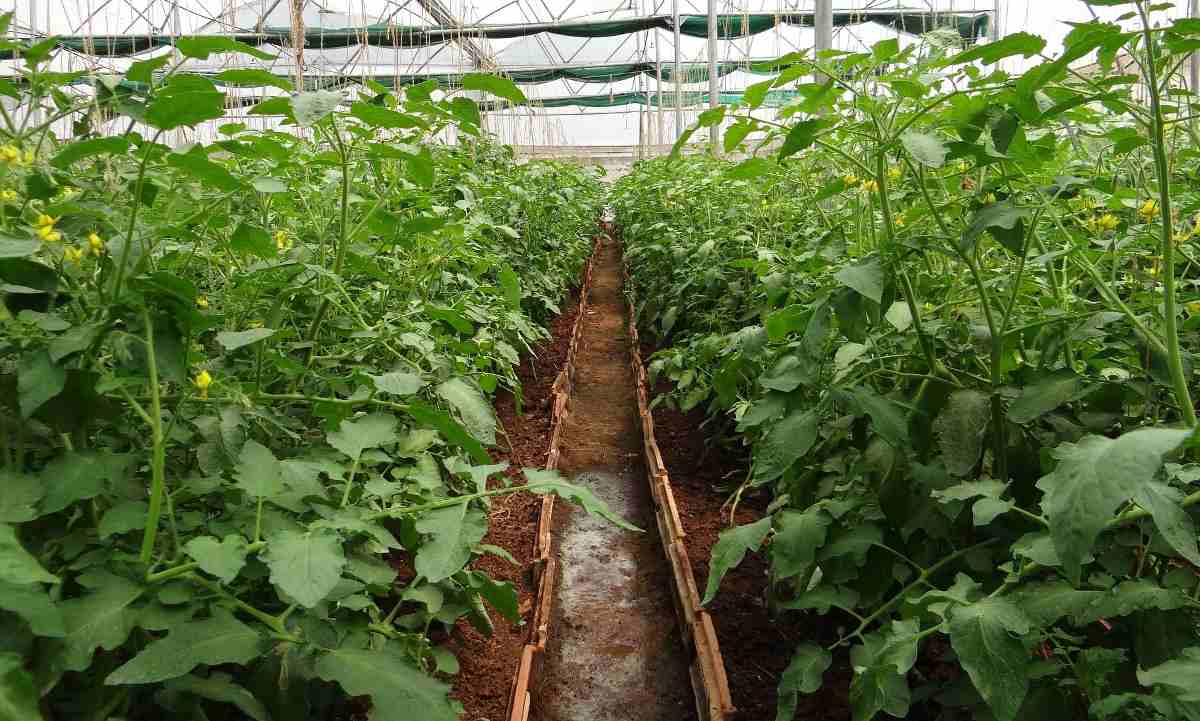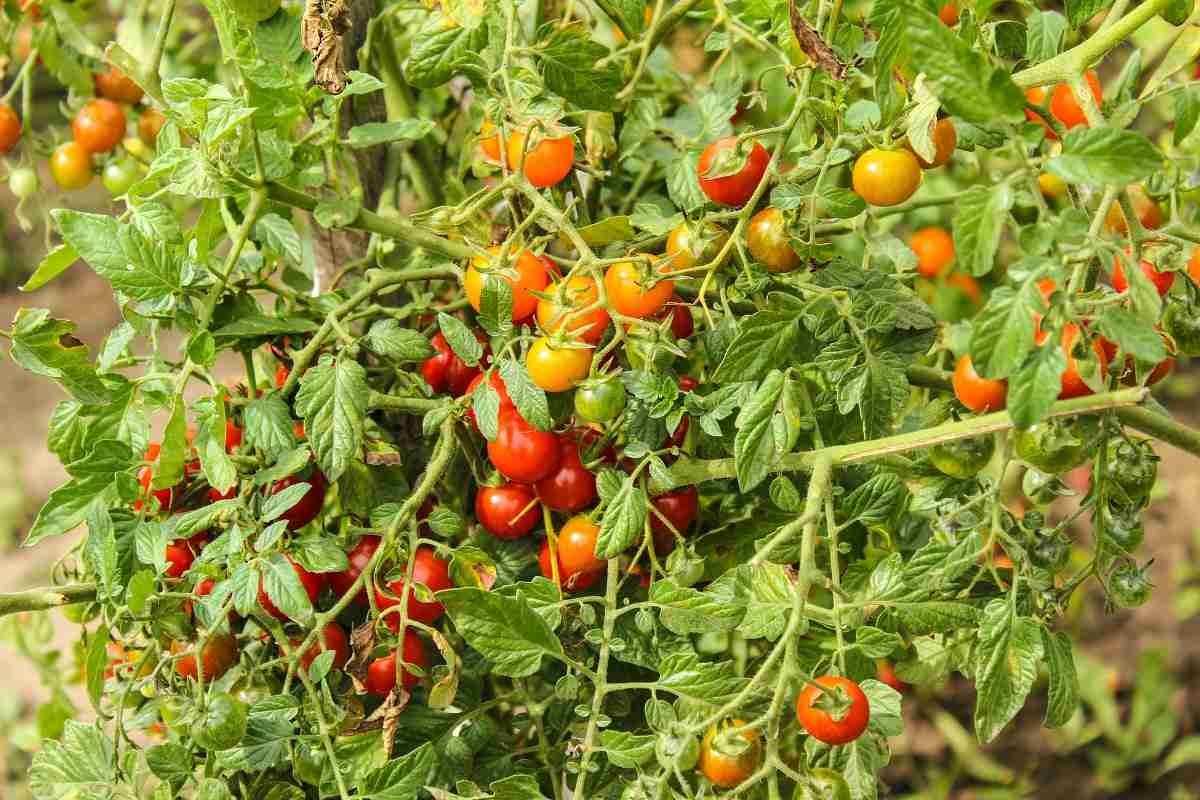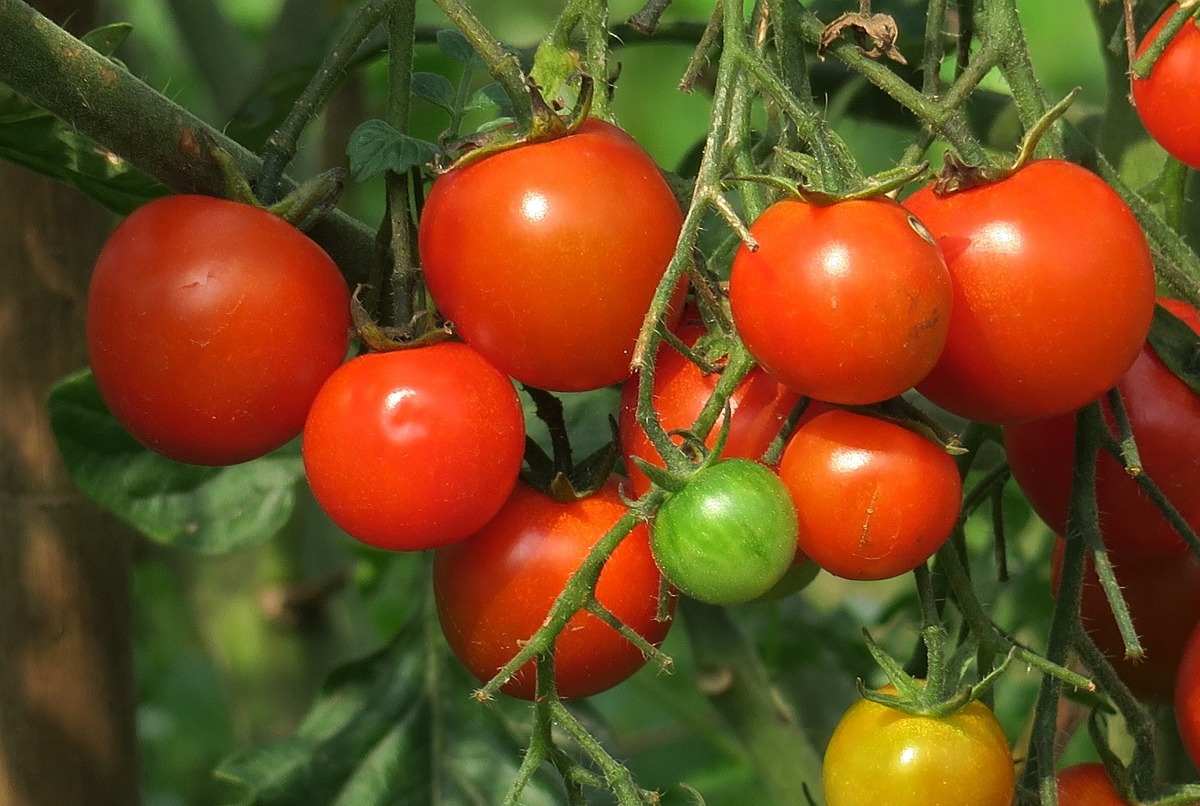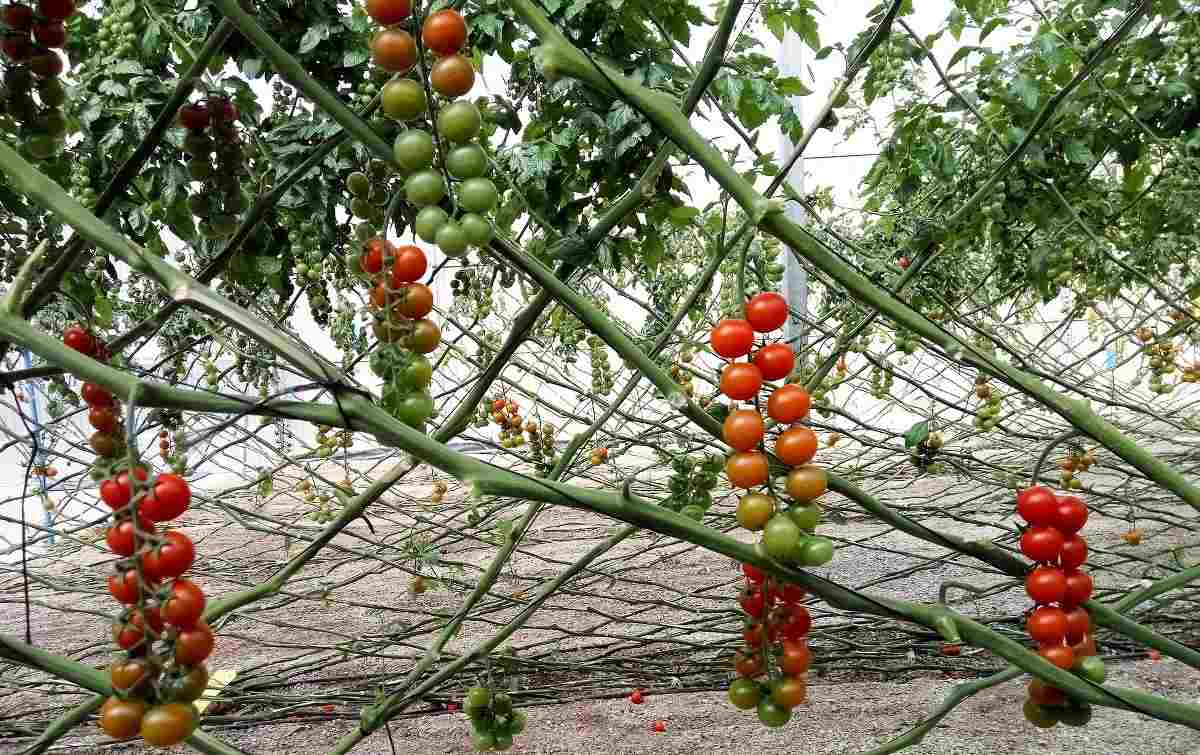Introduction to Tomato seed germination
Tomato is a relatively short-lived crop with high yields and production, it is economically attractive and growing acreage and can be grown at the larger level of the area. Tomatoes are rich in minerals, nutrients, vitamins, essential amino acids, sugar, and dietary fiber. Tomatoes contain vitamins B and C, iron, potassium, vitamin K. and phosphorus. Tomato is an annual or short-lived perennial pubescent herb and grayish-green curled uneven pinnate leaves. In this article we also discussed below topics;
- How long does Tomato seed take to germinate
- Process for germinating Tomato seeds
- Tomato seed germination period
- Paper towel germination method for growing Tomato
- How to germinate Tomato seeds faster
- What temperature do Tomato seeds need to germinate
- Tomato germination to harvest time
- Why won’t my Tomato seeds germinate
- Tomato seed germination temperature
- How do you germinate Tomato seeds
- Factors affected for Tomato seed germination
A step by step guide to Tomato seed germination

Soil required for Tomato cultivation
Tomato plants thrive in almost all types of soil. Fertile sandy loam is best suited for the Tomato production of early crops. Loam and sticky soils have greater water holding capacity and more suitable for longer production seasons. Soils rich in organic matter and mineral nutrients are suitable for increasing crop yields. Soil with a pH level of 5.5 to 7.0 is most suitable for Tomato production.
Time and temperature for Tomato seed germination
Temperature for Tomato seed germinates in the range of 10 to 35°C. The optimum range is 16 to 29°C, and optimum germination occurs at 29°C. The Federal standard for germination is about 75%. Tomato seeds typically germinate in 10 to 14 days if given optimal conditions.
Seed rate and seed treatment for Tomato
A general Tomato seed rate of 400 to 500g/ha is required. To avoid damping-off disease treats the seed with Trichoderma by 5-10 g/Kg seed or carbendazim 2g/Kg seed.
Treat the Tomato seeds with Trichoderma viride 4 g or Pseudomonas fluorescens 10 g or Carbendazim 2 g per kg of seeds 24 hours before sowing. Just before sowing, treat the seeds with Azospirillum by 40 g / 400 g of seeds. Sow in lines at 10 cm apart in raised nursery beds and then cover with sand.
Sowing seed and handling of transplants of Tomato seeds

Sow Tomato seeds six weeks (for determinate varieties) to eight weeks (for indeterminate varieties) before the last frost date in your area. The best planting medium for Tomato is a sterile seed-starting mix. Good drainage and aeration are important for starting Tomato seeds. Plant seed ¼ inches deep in shallow flats or cell packs and maintain soil temperature in the range of 24-29°C. After transplanting, keep seedlings at a lower temperature at night, 10-13°C, to promote earlier flowering in some varieties. Day temperatures should rise to 24-29°C to promote rapid growth. If fluorescent lights are used, keep the seedlings no further than 2 to 4 inches below the lamps, otherwise, seedlings may become leggy. Fertilize with complete, soluble organic fertilizer or fish emulsion if Tomato leaves become yellow and purple. Leaves with a purple coloration may indicate a phosphorous deficiency. Yellowed Tomato leaves may indicate nitrogen deficiency. To facilitate drought resistance and a larger root mass for nutrient absorption, set the plants deep in the topsoil to encourage the development of adventitious plant roots that develop along the stem.
Seed viability relative to germination of Tomato seed
Shelf life – Tomato seeds tend to last much longer in storage than other seeds. Just make sure they were stored properly (cool & dry) and you must have around a 4-5 year shelf life for Tomato seeds.
Storage – Humidity shortens the life of saved Tomato seeds more than any other aspect. Make sure seeds have wintered over in a cool and dry environment. Dry storage at less than 18°C will give you good seed germination results.
Vigor – Several online gardening sites explain how to test a few seeds for germination before planting. Just be aware that even if your older seeds germinate, if they are too old or shriveled they have a scant supply of food stored in their endosperm and the plants may end up weak and stunted.
Tomatoes need warmth and light
In case if you miss this: Organic Chilli Cultivation.

Tomato seeds kept at warm room temperature level and sprayed with water twice daily should sprout within a week. As soon as the Tomato seedlings break the surface, move them to bright light. A full-spectrum grow-light is ideal, but a sunny window will do provided the Tomato seedlings are watched closely to make sure they don’t dry out.
The spacing of Tomato plants
Recommended Tomato spacing distances depend on the variety and the support system used for the vines. For cage culture, plants should be spaced 24 to 48 inches apart within the row. Rows should be spaced 3 to 6 feet apart. Most indeterminate varieties are spaced 36 to 42 inches within the row and five feet between rows. Closer spacing produces higher total yields than wide spacing, but spacing which is too close may promote disease by interfering with air circulation. Before determining to space, you must be familiar with the width and height of the varieties you plan to grow. Certainly, soil fertility, water, tilth, and variety characteristics all have a relationship to the final Tomato plant size.
The process of Tomato seed germination
Step 1) Seed germination is the first step toward making a plant, when a seed breaks open to form a root, then a stem, then leaves, at which point it can be called a seedling. Tomato seeds germinate in 10 to 14 days if given optimal conditions. You’ll know Tomato seeds have germinated as soon as you see green plants emerging from the growing medium.
Step 2) The rate of germination for a particular packet of Tomato seeds mainly depends on the source and age of the seed. This can be called the viability of the Tomato seed. Typically, the older the seed, the lower the seed germination rate and less viability. Increase your chances of getting the number of Tomato plants you desire by planting 25% or more seeds than you think you’ll need. Some Tomato seeds may not germinate, but you’ll still have what you need.
Step 3) If you have issues with germinating Tomato seed, the temperature may be the problem. Ideal temperatures for germination are 10 to 35°C. Temperatures much lower than 21°C will cause slower germination, and if temperatures dip far below, germination may not occur at all. Likewise, hot temperatures well above 26°C can also cause germination to fail. If you need to increase the temperature level, a plant heating mat is a good helper.
Step 4) Seeds can be started in small pots of damp seed starting soil, damp potting soil, or in moistened peat pellets. In each container, you will be planting two seeds. Then, this will help ensure that each container will have a Tomato seedling, in case some of the Tomato seeds do not germinate. The Tomato seeds must be planted about three times deeper than the size of the seed. This will be 1/8 to 1/4 of an inch, depending on the Tomato variety that you have chosen to grow. After the Tomato seeds have been planted, put the seedling containers in a warm place.
Step 5) After planting the seeds, it is just a matter of waiting for the seeds to germinate. The Tomato seeds should germinate in 10 to 14 days. Cooler temperatures will result in longer germination time and warmer temperature level will make the Tomato seeds germinate faster. Once the seeds have germinated, you can take the Tomato seedlings off the heat source, but they should still be kept somewhere warm. The Tomato seedlings will require bright light and the soil should be kept moist.
Special germination tips and tricks for difficult seeds
You may also check this: Hydroponics Farming.

Pre-soaking seeds – Soaking seeds in warm water overnight before planting helps to soften the seed coat and speed up seed germination. Many Tomato seeds, even if it is not stated in their steps of seed germination, will benefit from pre-soaking.
Scarifying seeds – This refers to the process of literally damaging the seed coat, by scratching the seed with sandpaper and then soaking in water. Some seeds are so hard and well protected by their seed coat that the seedling is not able to break through it on its own. Tomato seeds do not need scarifying, but some of the larger seeds with hard seed coats would benefit from this.
How do you germinate Tomato seeds in paper towels?
Germinate Tomato seeds before you sow them in potting mix. Pre-sprouting helps accelerate the Tomato seedling crop. Pre-sprouting is easy and it takes just a couple of days.
When you germinate Tomato seeds before planting them, and they have a greater chance of growing into seedlings than those you sow directly.
- Moisten a single paper towel sheet and paper should be damp but not sopping wet.
- Sprinkle seeds on the paper towel so they are not touching. Seeds will adhere to the paper and use only one variety of Tomato seed per roll. If you’d like to pre-sprout just a few Tomato seeds of one variety, tear the paper towel into smaller sections.
- Starting at one end, roll the paper towel loosely in cylinder-fashion.
- Place the rolled paper towel into a zipped plastic bag and label the bag with Tomato variety and date.
- Then, place the bag in a warm place away from drafts, such as on the top of the refrigerator. Or use a seedling heat mat.
- Check the Tomato seeds a couple of times each day for germination. Carefully unroll the paper cylinder and look for the root emerging from the Tomato seed. Some seeds germinate within 24 to 48 hours. Other varieties, particularly smaller varieties and those suited to grow in containers, take longer to sprout as much as 10-14 days.
- As soon as the seed’s taproot emerges, plant germinated seeds.
- Plant your germinated seeds in seed cell trays within 12 to 24 hours of sprouting. Be careful to not allow the Tomato seed’s root to grow too long while still in the paper towel, or the root will penetrate the paper and be difficult to manipulate without breakage. Once the root is broken, your Tomato seed will no longer be viable.
Reasons why Tomato seeds not germinating
There are many reasons why Tomato seeds fail to germinate. To germinate successfully, seeds need several needs to be met. These contain water, oxygen, temperature, and correct levels of light.
The seed was old
First, check the ‘sow by’ date on the packet. The seed that’s beyond this date will still germinate but the success rate is reduced. And, always check the recommended germination temperature on the seed packet. Extremes of heat or cold can prevent seeds from germinating so it’s well worth monitoring the soil temperature with a soil thermometer. Most species can be sown successfully indoors at temperatures between 13 – 21°C easily achieved in a heated propagator or on a bright windowsill. Once seeds germinate, you can move your seed trays to a slightly cooler position.
The soil was too wet or too dry
Wet, poorly drained soils or dry, sandy soils can be difficult environments for Tomato seed germination. Both can be improved by adding plenty of organic matter such as well-rotted manure and homemade compost. On wet soils this improves drainage and air circulation, while on dry soils organic matter acts as a sponge, holding water in the soil for longer.
Watered incorrectly
Tomato seeds need to be moderately moist to sprout. Tomato seed germination is highly dependent on watering. Too dry and they won’t get the message to sprout, too wet and they will rot in the dirt.
Tomato harvesting and yield
Once Tomato plants start ripening and check vines daily. Cut or gently twist off Tomato fruits, supporting the vine at the same time. For best flavor, leave the fruits on the Tomato plants for as long as possible. At the first sign of heavy frost, harvest all Tomato fruits. Green fruits will eventually ripen while stored in a warm place out of direct sunlight. Tomatoes require 90 to140 days to mature from seed; 60 to 90 days from transplanting, depending on the variety. The average Tomato yield is about 30 tonnes per acre.
Commonly asked questions about Tomato seed germination
You may be interested in Vermicompost Production Cost, Income, Project Report.

Do Tomato seeds need sunlight to germinate?
Tomato seeds can be sown directly outdoors but may not have enough time to grow to full size and produce, depending on climate. Tomato seeds don’t need light to germinate, although, after germination, you should ideally give the seedlings 14 or more hours of light a day.
How much water do Tomato seeds need to germinate?
Early in the growing season, watering Tomato plants daily in the morning. As temperature level increases, you might need to water Tomato plants twice a day. Garden Tomatoes require 1-2 inches of water a week. Tomato plants grown in containers require more water than garden Tomatoes.
Should I soak Tomato seeds before planting?
Tomato seeds don’t necessarily need to be soaked before the seeds are planted. But if you want Tomato seeds to germinate more quickly after they are planted, a good soak will do just the trick. The water softens the seed and cut germination time down to a few days. Leave them to soak in the water for about 24 hours.
What month do you plant Tomato seeds?
Sow your Tomato seeds in March or April, approximately 6 to 8 weeks before the final frost of the winter, or earlier if you’re growing your tomatoes in a greenhouse. Sprinkle the Tomato seed thinly onto good quality seed compost.
What three conditions do Tomato seeds need for germination?
Like all seeds, Tomato seeds stay dormant until the environment has all the conditions required for germination. Tomato seeds need water, oxygen, and warmth to start growing. Dry seeds are dormant seeds.
What are the early signs of overwatering Tomato plants?
The early signs of overwatering in Tomato plants include cracked fruit and bumps on the lower leaves. If the overwatering continues, the bumps or blisters on the plant leaves turn corky. Meanwhile, the plant roots begin to drown, die, and rot, which reduces the amount of water the green part of the plant receives.
In case if you are interested in this: How to Make Money from a Vegetable Farming.
Sir please
Guide me how to export quality products farming